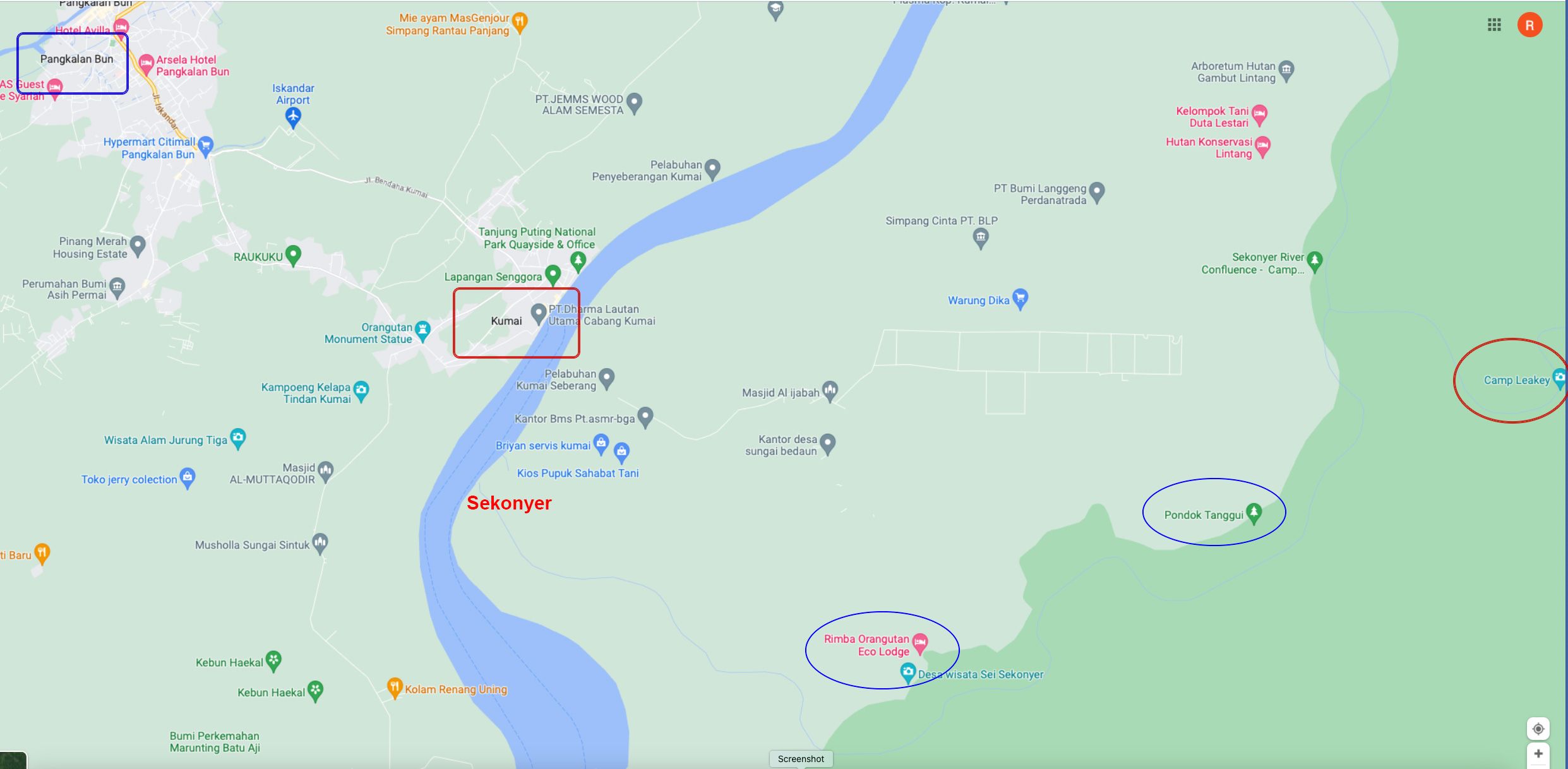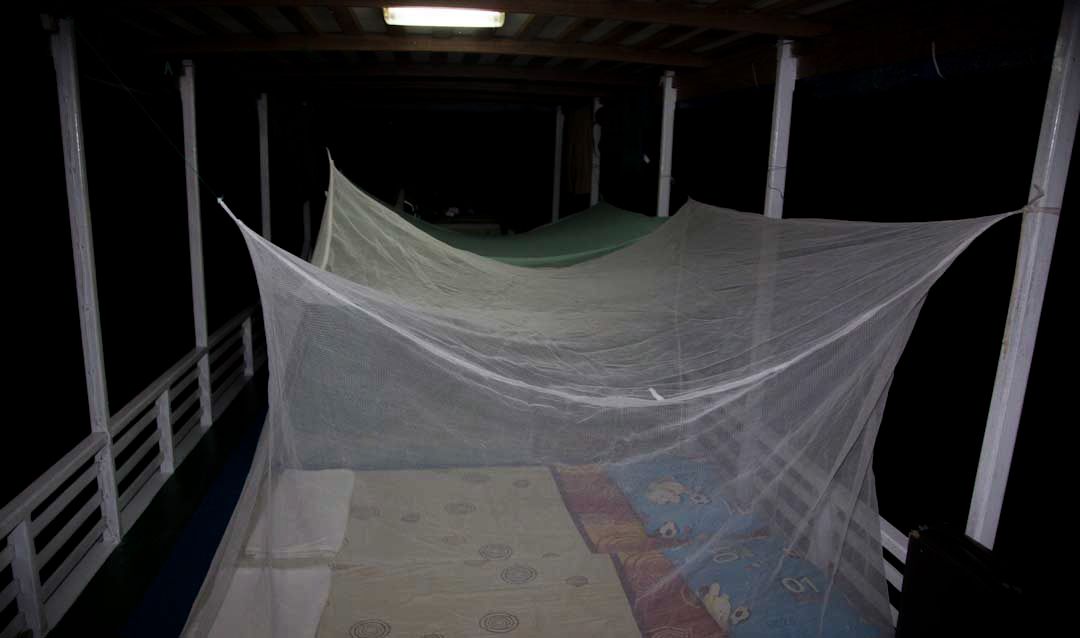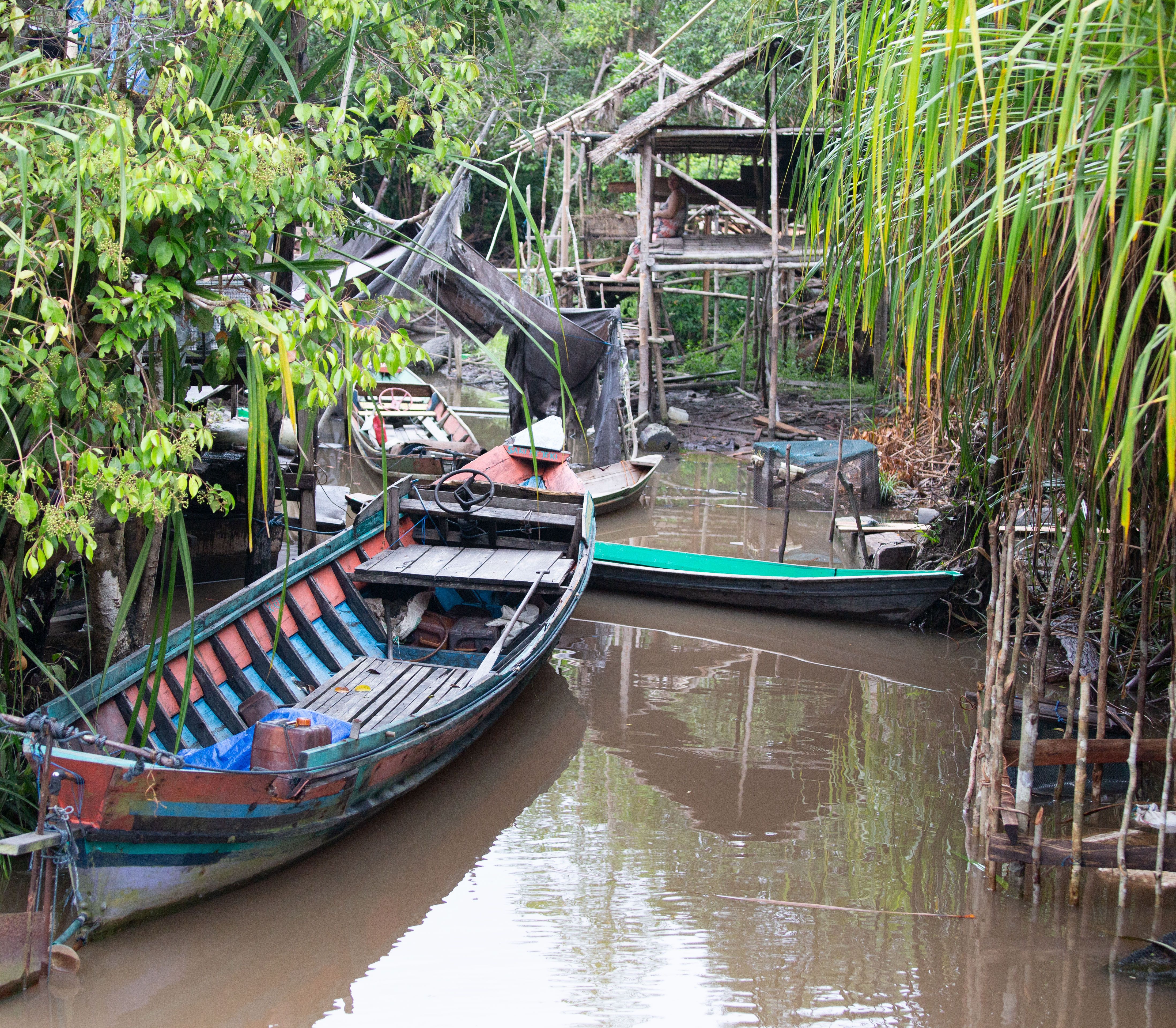From the lens of a veterinarian: Voyaging to Camp Leakey in a klotok
Veterinarian and wildlife photographer returns to Camp Leakey, this time, to discover how palm oil plantations were impacting the Bornean orangutan
After my trip in 1991 to Camp Leakey, the next time I returned to the camp was 2012 with the ultimate goal of seeing the orangutans in the wild. I was told the rainforest had changed substantially due to palm oil plantations, and I was curious to see how this affected the orangutans there.
Camp Leakey in Tanjung Putting National Park in Borneo is where Birute Galdikas, a pioneer in orangutan research, did her seminal work on the orangutans starting in 1971. Birute named the camp after the famous anthropologist, Lewis Leakey, PhD. In addition to sending Galdikas to Borneo to study the orangutans, Leakey sent Jane Goodall to study the chimpanzees in Tanzania, and Dian Fossey to study the gorillas in Rwanda.
As it turns out, the ride along the Sekonyer river to Camp Leakey in 2012 was a trip in itself. The boat ride there will be the subject of this article, along with the next one where I showcase the unique wildlife we saw on the voyage to the camp.
The route to Camp Leakey.

Our trip to Camp Leakey began at the city of Pangalabun (the blue square at the top left of this map). This is the “big city” in the area, the city you fly into from Jakarta on a puddle jumper airplane, and where the Orangutan Care Center housing the orphaned young orangutans is located.
After driving from Pangalabun to the port of Kumai (the red square on the map) we boarded our klotok—an Indonesian riverboat—and went a short distance down the Lamandu river to the entrance of the Sekonyer river (labeled in red letters).
Once on the Sekonyer river we spent 2 days journeying deeper into the rainforest, passing the Rimba Eco Lodge and the Pondok Taggui feeding station for the orangutans, on to our destination of Camp Leakey, circled in red at the far right of the map.
The only way to reach Camp Leakey is to take a klotok, which is named after the “klotoking” sound it makes from its inboard engine as it putters downriver. You can hear what a klotok sounds at this video link: https://www.youtube.com/watch?v=xtRMPLiL3rY.
Our klotok had a personal chef, the top deck offered extraordinary views of the passing rainforest, there was shade from the intense sun at the equator, and at night they made us a comfy bed on the top deck with a mattress and mosquito netting. The dead silence of the jungle at night lulled us to sleep.
Our klotok bed awaits us.

Compared to what we are used to in North America, a trip on the equator can be a unique, and sometimes surreal, experience. First, there are no seasons like summer, winter, spring, and fall. The sun rises at 6 am and sets at 6 pm every day, giving the rainforest 12 hours of daylight and 12 hours of darkness. Their seasons, if you want to call them that, are broken down into rainy and not-so-rainy.
Borneo is an island mostly made up of the country of Indonesia (this part is called Kalimantan). Indonesia is the country with the largest Muslim population on the planet, with a culture different than ours in the western world. We always encountered friendly and respectful people that were a pleasure to work with. You will learn more about these people in a later article when I talk about our work at the orangutan baby orphanage.
Adapting to the incessant heat and humidity was more difficult than adapting to the culture of the Indonesian people. If you go there, plan on what I like to call “the hundreds"—100° Fahrenheit and 100% humidity—for most of your trip. If you can imagine going to sleep at night inside of an oven set at 100° Fahrenheit, with the door partially open, you have an inkling of the feeling of oppressive heat. Luckily, we brought portable fans with us to keep the air moving and make it more bearable.
The intense heat and humidity started first thing in the morning with a dense mist and no movement of the sweltering air. The songbirds and cicadas started their morning chorus first, accompanied soon after by the Langurs and hooting Gibbons. We could not see them through the morning mist as these sounds echoed around us like a surround sound stereo system.
My favorite time on the Sekonyer river was early morning with the mist and sounds of the rainforest waking up.
Our boat captain was up early to catch fish.
As our klotok moved on from its evening mooring, giving us a slight breeze, and the sunlight appeared, the morning concert ceased. Daylight seemed to bring things to a more normal state as we were preoccupied looking at the Proboscis monkeys and other wildlife along the riverbanks.
When our klotok stopped moving and docked for the night, the light breeze stopped, and the intensity of the heat and humidity returned. As the sun started setting, the flying insects emerged, chased by the birds that flew like fighter planes plucking them out of the air. As the sky further darkened, the flying foxes (the world’s largest bat) came out for their evening meal of fruit. We had front row seats to this spectacle.
Morning yoga started right after the cicadas quieted down.
The crew below deck prepared breakfast while extended side angle yoga poses were going on at the top deck.
The stillness of the pitch-black evening at bedtime, with calm river water, and the still and quiet rainforest animals, brings to mind the words “dead calm.” Our day ended with the vivid and bizarre dreams we had during a fitful night of sleep. Welcome to the equatorial experience!
As we proceeded downriver, we motored past people that lived in homes on stilts called longhouses, and who subsisted on the bounty of the river. A boat is their only means of transportation. The few people we saw smiled and waved at us.
The longhouse can be seen behind the boat.

After 1 full day, we reached a junction on the Sekonyer river with a ranger station. This is where the color of the Sekonyer’s river water changes from a muddy brown to black due to the tannins released from the decaying vegetation. Because of this phenomenon, some people call this part of the Sekonyer river the “Black river.” We were then deep in the rainforest.
The transition from muddy brown to black as we approach the ranger station is apparent.
From now until you get to Camp Leakey it is you, your klotok, and the rainforest, all in tune with the rhythms of the rainforest and local customs.
Next month, I will show the unique wildlife we encountered on the Sekonyer river on the way to Camp Leakey.